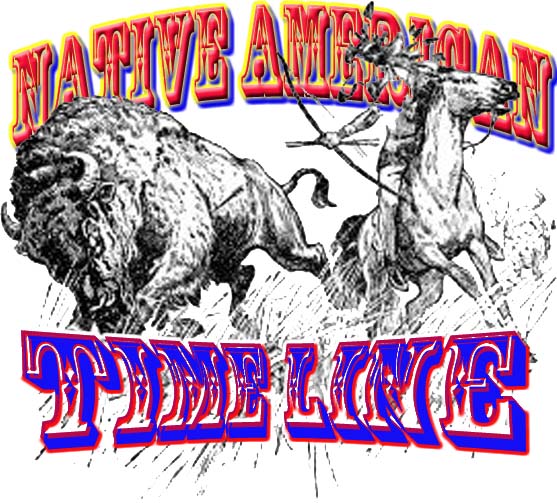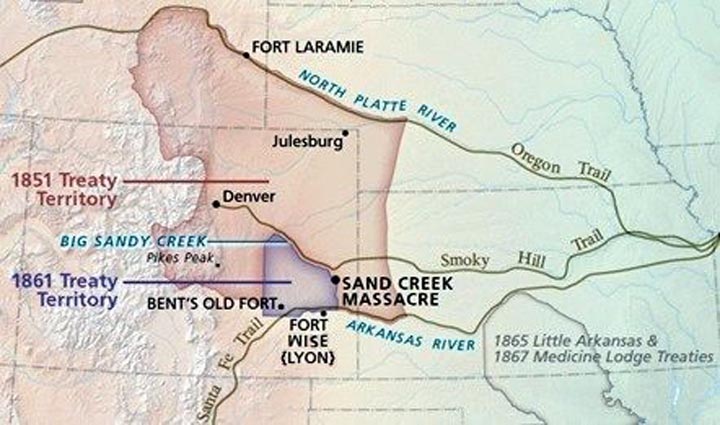1860
Jerry James, the son of Chief Captain Jim was the only survivor out of 188 Indians from the Wiyot Tribe that were attacked and killed by white settlers from Eureka, California.
Navajo Chief Manuelito’s grazing land for his livestock was claimed by the army for their horses so the Navajo warriors attacked Fort Defiance in Arizona.
1860-64
Navajo Indians in New Mexico territory facing starvation and with winter coming, surrender to U.S. soldiers let by Kit Carson, ending the Navajo war. Carson’s men destroyed their property at Canyon de Chelly and forced the Navajo Long Walk to Bosque Redondo reservation at Fort Sumner.
1861
Colonel Bernard J. D. Irwin is awarded the first Congressional Medal of Honor for leading the attack and beating aggressive Chiricahua Indians in Arizona.
The Arapaho and Cheyenne signed treaties with the United States Government and were promised they could keep their land, “as long as the water flows and grasses grow”, but the tribes were forced to give up most of the eastern state of Colorado.
Fort Wingate, New Mexico, Navajo men, women and children are massacred while attending a peaceful horse race by U.S. army soldiers.
Cochise the Apache Chief and 22,500 Indian warriors attack the miners at Pinos Altos, New Mexico, leaving 3 miners and 14 Indians dead.
1862
A mass migration of settlers started onto lands belonging to the Indian Nations when Congress passed the Homestead Act, making the Native American homeland available to non-Native Americans.
Over 1000 settlers are killed when the Sioux Indians declare war on them for homesteading on their tribal homelands.
U.S. army soldiers overwhelm and defeat the Sioux warriors and force march the 1,700 survivors to Fort Snelling, a few Indians escaped and took refuge with some of the western tribes.
Mankato, Minnesota 400 Native Americans were tried for crimes during the Sioux Uprising. 40 adult male a day voluntarily surrendered to General Sibley who held them under the premise of guilty until proven innocent.
300 men were condemned to death, but President Abraham Lincoln intervened, 38 Sioux men were publicly executed. Due to mistake in properly recording the names of the men, orders to release one man who had saved a female’s life, came one day after he was hanged.
1863
Minnesota passed a law which puts a $25 bounty on Sioux scalps. One of the Chiefs of the Santee Sioux uprising, Little Crow is forced to steal horses and supplies so his people can just to survive.
While Chief Little Crow and Wowinapa, his son are picking wild berries he is shot dead by a settler who gets a 500 dollar bonus for his scalp that was put on public display in St. Paul. Wowinapa escapes, but later captured in Dakota Territory.
1864
Kit Carson’s troops force 8,000 Navajo men, women, and children on the 300-mile-Long Walk to Bosque Redondo from their ancestral homeland in Arizona to the barren land of a reservation in New Mexico. All the survivors of the Long Walk suffered malnutrition, disease, and hunger, and they were confined for four years in into prison camp conditions.
>>to return to previous page – right click on back arrow <<
Word count: 507















